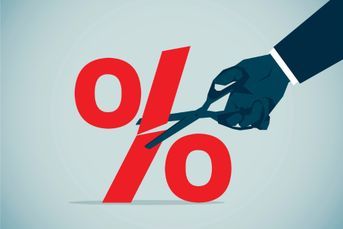Don’t count on the Trump Bump for your retirement
Stocks aren't priced to deliver big long-term returns, but they might stay high for a while
The S&P 500 has returned more than 11% since the election of President Donald J. Trump on Nov. 8, adding a bit of renewed thrill to a bull market that’s already eight years old. Clearly, investors are feeling optimistic about the prospect for returns. But many companies that put individual investors’ money to work for the long run have been arguing for lower long-term expectations.
That’s not a judgment on Mr. Trump or his economic policies — it’s about equity valuations and fundamentals that were in place before the election. Last year, Horizon Actuarial Services surveyed 35 investment advising companies about their working assumptions for returns. On average, they anticipated annual returns from U.S. large-company stocks of about 7% for the next decade. Not bad, but it may feel like a comedown: Since the market turned around in 2009, it’s churned out an annualized 17% return, according to S&P Dow Jones Indices. Since 1925, accounting for many cycles of bull and bear markets, stocks have returned about 10% annualized.
The so-so projections from the experts would come as news to many people saving for retirement. The giant asset manager BlackRock Inc. recently polled 1,000 participants in workplace savings plans and found that 65% weren’t familiar with forecasts saying stock and bond returns could be significantly lower than they’ve been in recent decades. Most said they expect future returns to mirror those of the past.
Among long-run forecasters, Rob Arnott, founder of investment adviser Research Affiliates, is on the bearish side, but his process is similar to one many use. He calls it “simple arithmetic.” He assumes stock returns over long periods will consist of the dividend yield they pay, plus the growth rate of earnings and dividends, including inflation. Today S&P 500 stocks yield an average of about 1.9%, and the growth rate over the past century has been about 4.3%. That’s a mere 6.2% expected return. Stock returns were often higher in the past because dividend yields were higher, too. “Most people pay no attention to arithmetic, because it gives them answers they don’t want to hear,” Mr. Arnott says.
That math assumes there’s no change in investors’ basic appetite for the risk of holding stocks. If they become more confident, that could push up valuations and add another bump to returns. Is that part of what’s been happening since the election? Robert Shiller, the Yale economist and Nobel Prize winner famous for his work on the effects of market psychology, says it’s hard to tell.
“It’s a mysterious time to be predicting market psychology — it’s not like most times in history,” he says, in part because interest rates and bond yields are still unusually low, which tends to make stocks look more attractive to investors. Mr. Trump has part of the population feeling more optimistic, Mr. Shiller says, but “the market started going gangbusters under Obama and has just continued upward under Trump.”
One effect of that long rally is that stocks look relatively expensive. The average price-earnings ratio for stocks in the S&P 500 is 18.3, based on consensus estimates of 2017 earnings. That’s near the high end of the historical track record, says Fran Kinniry, a principal in the investment strategy group at Vanguard Group, which manages more than $4 trillion in assets. And when he looks at other valuation measures — such as those based on companies’ revenue or free cash flow — they’re all in the top 25% of historical readings.
Similarly, Mr. Shiller points to a measure he helped popularize, called the cyclically adjusted p-e ratio, or CAPE, which compares prices with the average of earnings over the past 10 years to smooth out the ups and downs of the business cycle. When the CAPE is high, Mr. Shiller has found annual returns will tend to be lower over a long period. A low CAPE augurs above-average returns.
The average CAPE ratio for U.S. stocks over the past 100 years was about 17. It stands at 29.6 no — the only times it was higher were in 1929 and around the dot-com bubble, Mr. Shiller says. Those are worrisome precedents, but he’s quick to point out that during the dot-com episode the valuation multiple climbed to above 44 in 1999.
Valuation explains about 40% of returns, says Vanguard’s Mr. Kinniry; the other 60% is unexplaine — the market is just plain noisy that way. So instead of predicting a single number for future returns, Vanguard prefers to think of a probable range of outcomes. Mr. Kinniry says there’s a 25% or so chance that over the decade stocks will deliver the double-digit returns many investors expect. There’s the same chance of an average return of 3% or less. In that scenario, it will be hard for many to fund a comfortable retirement without extraordinarily diligent saving.
Bonds don’t offer an especially appealing alternative, given that 10-year U.S. Treasuries are paying just 2.5%. “That’s why it’s not so clear you want to exit the market,” Mr. Shiller says. “It’s not clear at all.” Even so, Mr. Kinniry and others have been advising individual investors to rebalance their portfolios to account for the big rise in equities — in other words, shift money from stocks to bonds. The strategist notes that there’s been a lot of money flowing into equities over the past three months. “What you’d want to see is cash flow be countercyclical to maintain asset allocation, to go into bonds,” Mr. Kinniry says. “But unfortunately investors buy past returns.” Even with low returns, high-quality bonds offer diversification when equities are in a bear market. Not that he’s predicting one, mind you.
Learn more about reprints and licensing for this article.








